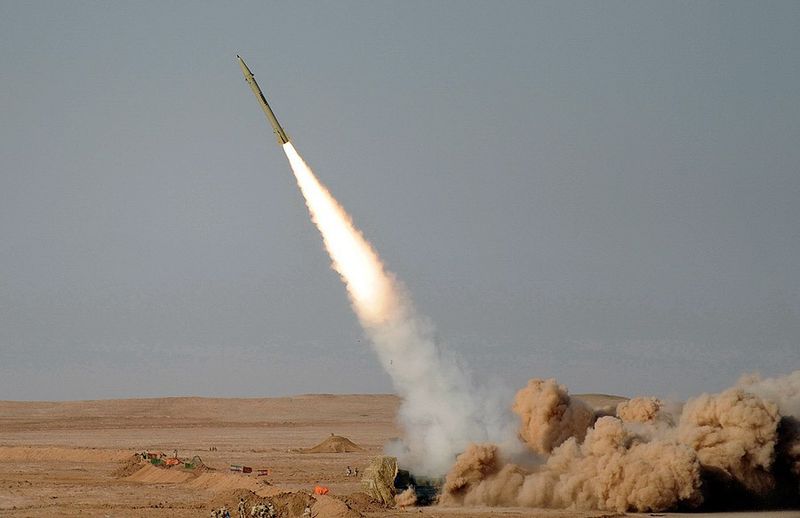Iran Increases Range of “Qiam” Ballistic Missile To 1000 Kilometers
The Iranian Revolutionary Guards’ Tasnim news agency stated on 3 January, that the Qiam series surface-to-surface Short Range Ballistic missile had received major modifications (SRBM).
The Qiam missile, first introduced in 2010, is a single-stage, liquid-propelled, short-range ballistic missile developed by the Islamic Revolutionary Guards Aerospace Force (IRGC-AF) using the progress made in developing the Shahab class ballistic missile family with the assistance of countries such as North Korea, China, and Russia. The “baby-bottle” design detachable warhead, which boosts hit sensitivity to high levels, is said to give the Qiam-1 missile a low radar signature, and the missile provides an edge over defensive systems due to its speed in the terminal stage. The Qiam-1, unlike the Shahab-2, did not have tail wings and previously had a range of 700-800 km and a payload of 750 kg. Furthermore, the missile had a CEP of 100 meters (circular error probable).
The missile, which entered Iranian troops’ arsenal in 2011, was first utilized operationally in 2017 and 2018 to strike Daesh targets in Syria. During the same time period, UN reports claimed that Iran began transferring its Qiam-1 missiles to the Houthi movement in Yemen under the name “Burkan-2H.” After Houthi forces targeted Saudi Arabia’s critical energy infrastructure sites with Burkan-2H missiles, which have comparable design features and dimensions to Qiam-1, the name Qiam-1 became well known in the media.
According to a report released by Tasnim news agency on Monday, January 3, the new Qiam missile’s error range has been decreased from 100 meters to 50 meters, and the missile’s range has been extended from 700-800 kilometers to 1000 kilometers.
Apart from the decreased CEP (circular error probability) value and greater range, the technical features of the new missile have also changed, according to the information provided. The upgraded version of the Qiam missile has a 600 kilogram warhead and can reportedly travel at a speed of 1,935 meters per second. The Qiam missile has a diameter of 888 millimeters, a length of 11,846 meters, and a weight of 7,029 kilograms. The time it takes to prepare the missile for launch has also been lowered by 20 minutes, according to reports.
Iran, which has been developing missiles since the 1980s, has one of the most diversified missile arsenals in the Middle East. The Iranian government continues to use and develop cruise missiles with a range of 2,500 kilometers, as well as various types of short-range (300-700 km) and medium-range (2,000 km) ballistic missiles, despite its disagreements with Western countries, particularly the United States, over its ballistic missile program. It announced at the start of 2021 that it will not engage in any negotiations on the restriction of missile activities.

